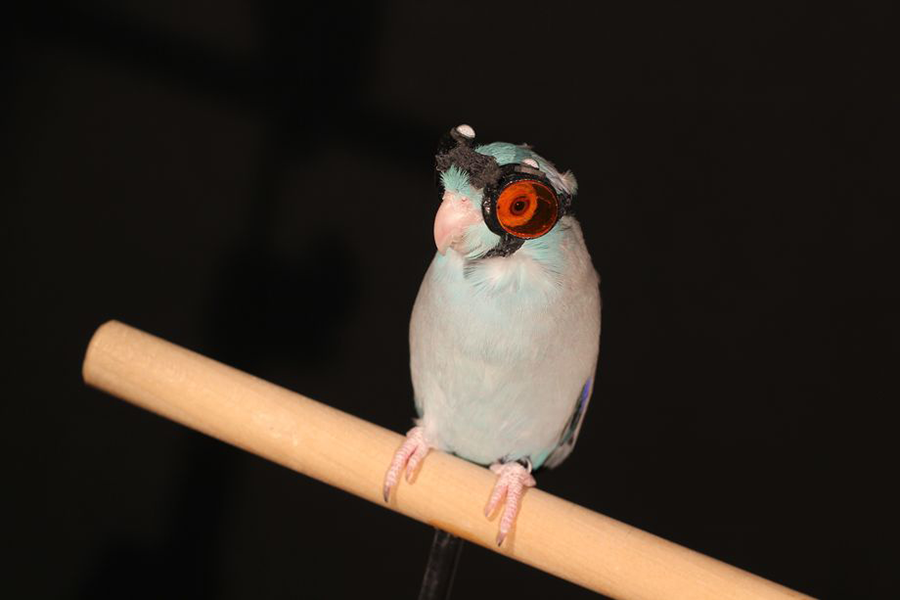This experimental laser parrot wears safety goggles
Loading...
Safety goggles are for the birds, according to Stanford University researchers who custom-built a pair for their lab’s tiniest flight-tester this year.
Researchers at Stanford’s Lentink Laboratory are fascinated by the air patterns generated by the motion of a flying bird’s wings, air patterns that could make a big difference in how engineers design airplanes and drones.
Yet in order to test how these air patterns, known as vortices, work, researchers had to send a tiny parrotlet named Obi where no human has gone – through a laser sheet seeded with particles.
“We would never do this ourselves, we would never walk through a laser sheet without having any protection – so we really had to think about how can we protect our bird,” said Stanford mechanical engineer David Lentink, according to Wired.
A paper published on Tuesday in the journal Bioinformatics and Biomimetics details the research team’s findings, which are relevant to real world engineers, as well as to bird (and miniatures) enthusiasts.
Researchers say that Obi’s participation in their research was key – every flap of his wings gave scientists another data point in their quest to understand how flight works.
“When the bird flaps its wings it moves these particles,” Diana Chin, a graduate student at Stanford, told Wired. “In this plane, we can vizualise how tiny particles are moving and then calculate the velocity field. Based on those velocity fields we should be able to theoretically calculate the lift force the bird is generating in flight.”
While it is easy to study the vortices generated by airplane wings, scientists say, it is more difficult to study those generated by flying creatures, such as birds. Whereas airplane wings generate consistent effects, erratic bird wingbeat patterns mean that it can be harder to predict what the vortices look like.
In order to study the air patterns, researchers trained Obi to make a short flight, which they photographed using four cameras shooting 1,000 frames per second, each.
Graduate student Eric Gutierrez was responsible for making Obi’s shades, which he fashioned out of 3-D printed sockets and cut down human safety lenses.
Scientists at Lentink Labs compared their results to three traditional models of vortex formation, and found that none of the three fit just right.
"Whereas vortex breakup happens far away behind the aircraft – like more than a thousand metres – in birds, it can happen very close to the bird, within two or three wingbeats, and it is much more violent," Lentink said.
And this research isn’t merely interesting to those who are curious about animal flight – it can have incredibly practical applications. Lentink explained the importance of the group’s research, saying in a video:
"Many people look at the results in the animal flight literature for understanding how robotic wings could be designed better. Now, we've shown that the equations that people have used are not as reliable as the community hoped they were. We need new studies, new methods to really inform this design process much more reliably."








